
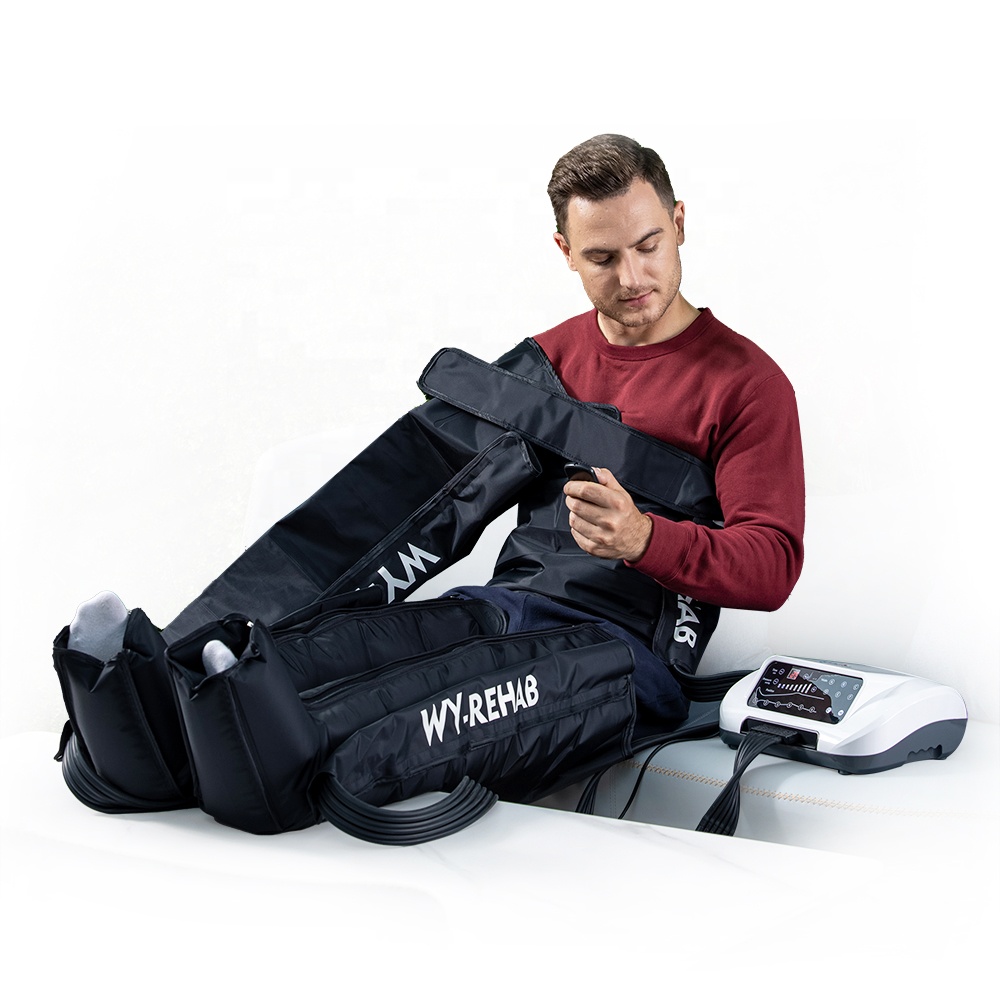
In the field of health technology, air compression massagers have long been renowned for their ability to relieve leg fatigue, reduce swelling and improve blood circulation. But what if we told you that these devices - often referred to as leg compression massagers or air compression leg boots - can do much more than that? In addition to their primary function of targeted relief from leg fatigue, these innovative gadgets are quietly becoming multi-purpose tools for personal care routines. 1. From legs to arms: Multi-purpose conversion While leg compression boots are designed to wrap the lower limbs in rhythmic air pressure, their core technology is not limited to one part of the body. By combining different accessories, such as arm sleeve, waist sleeve, etc., the air compression massage machine is suitable for massage of the whole body. 2. Your feet 'new best friend Feet, which are often neglected in daily self-care, can also benefit from an air compression massage. By putting your foot into a modified device or using a specific foot attachment (if your device supports it), you can experience a rejuvenating massage for plantar fasciitis, swollen ankles, or the stress accumulated from standing all day. It's like having a personal masseuse for your feet at the push of a button. 3. Rehabilitate your partner after exercise More and more athletes and fitness enthusiasts are turning to air compression boots, not only for leg recovery, but also as part of their overall post-workout routine. The adjustable pressure setting allows the user to customize the intensity, making it suitable for massaging other muscle groups such as calves, thighs, and even the abdomen (which requires careful and proper guidance). This versatility means that one device can replace multiple recovery tools, saving space and money. 4. Innovative applications in daily life Beyond the obvious, creative users have found unexpected ways to incorporate air compression massagers into their daily lives. For example, some people use it to help drain lymph, especially in areas prone to swelling or fluid retention. Others have tried using the device on their hands to relieve symptoms of carpal tunnel syndrome or arthritis-related discomfort. 5. Technology is an enabler The magic behind these versatile uses lies in the air compression technology itself. Unlike traditional massage tools, air compression devices rely on controlled air flow to simulate the natural rhythmic contraction of muscles, promoting blood circulation and oxygen delivery. When applied creatively, this technology can be adapted to different body parts, making it a scalable solution for local recovery and relaxation. 6. The call to explore With the continuous development of the health industry, the air compression leg massager is no longer a single trick. Its ability to adapt to different body parts and conditions makes it a valuable addition to any self-care program. Whether you're a professional athlete, a busy office wor...
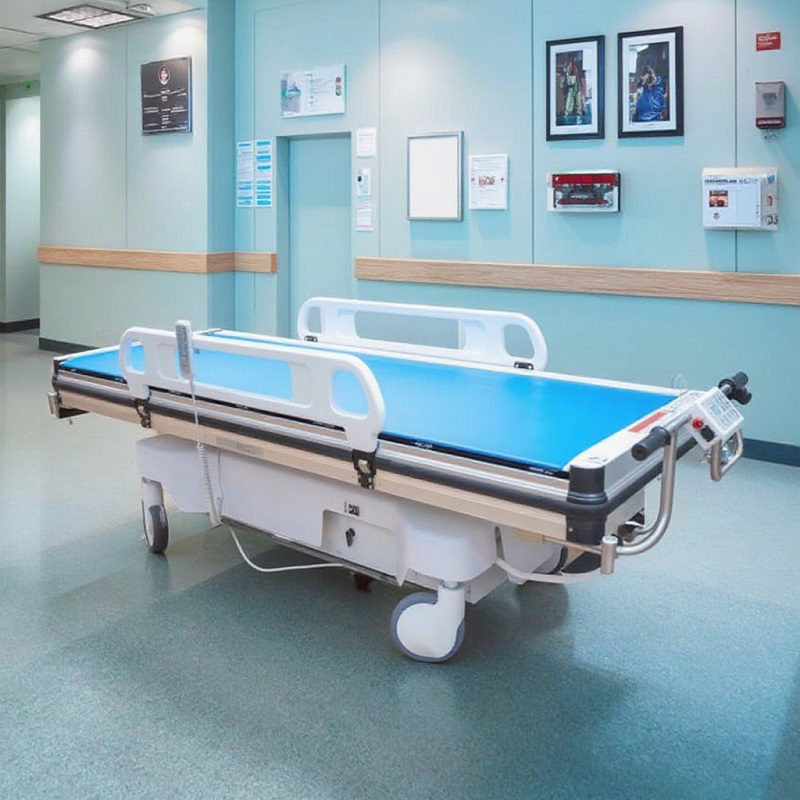
In healthcare facilities, electric patient transport beds are critical to safely moving patients, reducing transit times while minimizing physical stress on staff. However, these transport beds face constant exposure to pathogens and mechanical stresses. Proper disinfection and maintenance is not just a matter of hygiene; They are an investment in longevity, cost efficiency and patient safety. So how to maintain and maximize the life of the electric patient transport bed? This article will tell you the answer. 1. Decontamination protocols to eliminate risks After each use, first wipe all surfaces with an EPA-approved hospital grade disinfectant. Focus on high-contact areas such as railings, control panels, and mattress platforms. For cracks and joints, use cotton swabs dampened with disinfectant to avoid residue buildup. Always follow the electronic component manufacturer's guidelines - many control panels require an alcohol-free solution to prevent damage. Allow the surface to air dry completely before using. For electric transport beds with removable parts, such as headboards, they should be disassembled and thoroughly cleaned to remove hidden contaminants. 2. Periodically check key components The pre-use checklist ensures that minor issues do not escalate. Start with the battery: Check for leaks, corrosion, or expansion. Check the charging port for debris to ensure a safe connection. Second, check the wheels and brakes, worn tires or loose brake cables can affect stability. Check that all seatbelts and latches are in working order. Do not neglect the motor housing: excessive noise or heat during operation may indicate internal wear. For hydraulic systems in certain medical transport vehicles, check fluid levels and leaks monthly. 3. Handling common problems Power failure: If the bed cannot be started, check the battery terminals for corrosion. If plugged in, test the socket to make sure the charger is not faulty. Erratic movement: Debris in a motor or wheel bearing often causes convulsions. Clean and lubricate moving parts. Brake failure: Tighten loose cables or replace worn brake pads immediately. Never bypass a security lock, even temporarily. For complex issues such as motor burned-out or control panel errors, consult the manufacturer's manual or contact a certified technician. Stopgap solutions may seem cost-effective, but they compromise patient safety. 4. Proactive maintenance to achieve long-term reliability Deep cleaning is scheduled quarterly, with a focus on the chassis and engine compartment. Replace worn casters immediately - uneven wheels can strain the motor and frame. Train staff on proper loading techniques to avoid overloading. For facilities with multiple patient transfer beds, a rotation system is implemented to evenly distribute wear and tear. 5. Extend equipment life through smart practices Buy a protective cover to protect the bed from dust and liquids when not in use. Encourage employees to report anomalies as early as p...
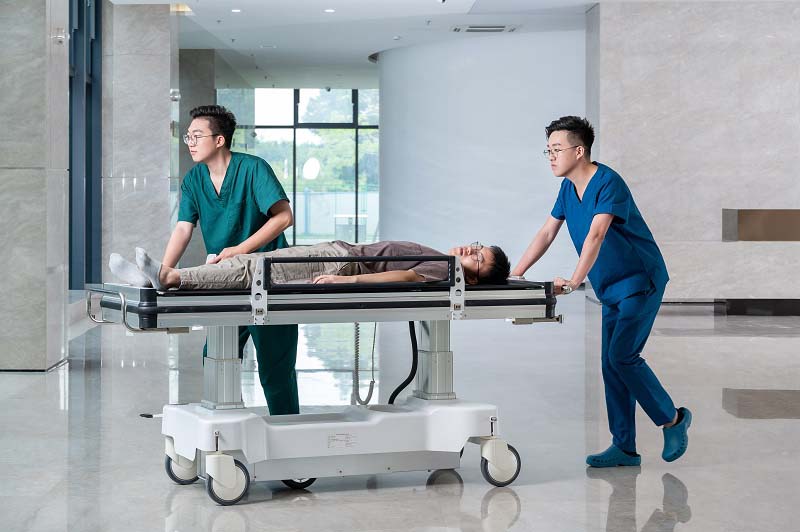
When selecting an electric patient transfer bed, the battery type is a critical decision impacting performance, longevity, and operational efficiency. For medical facilities prioritizing reliability and speed, understanding the nuances between lithium-ion (Li-ion) and lead-acid batteries is essential. Lithium-ion batteries are increasingly favored in medical transfer equipment for their high energy density and rapid charging capabilities. Unlike lead-acid alternatives, Li-ion batteries maintain consistent power output even during prolonged use, critical for emergency scenarios where sudden voltage drops could delay care. Hospitals adopting Li-ion-powered beds report up to 50% faster charging cycles, reducing downtime and ensuring hospital beds are always ready for the next patient. While lead-acid batteries have a lower upfront cost, their drawbacks are significant. They are heavier, reducing maneuverability in tight hospital corridors, and their shorter lifespan—typically 300-500 cycles vs. 2000+ for Li-ion—means frequent replacements. This not only increases long-term expenses but also disrupts workflows. Additionally, lead-acid batteries contain toxic materials, complicating disposal and raising environmental concerns. Environmental sustainability is another advantage for Li-ion technology. With no hazardous materials, Li-ion batteries align with green hospital initiatives. Their efficiency also reduces energy waste, cutting the carbon footprint of electric patient transfer vehicles. For facilities aiming to balance performance and eco-friendliness, Li-ion is the clear choice. Ultimately, the decision hinges on usage patterns. High-traffic emergency departments benefit most from Li-ion’s durability and speed, while low-frequency settings may tolerate lead-acid’s limitations. For cutting-edge solutions, companies like Xiamen Weiyou Intelligent Technology Co., Ltd., offer the high qualiry hospital transfer beds designed for peak efficiency. By prioritizing innovation and sustainability, they ensure medical teams can focus on what matters most—saving lives.

Selecting the right electric patient transfer trolley/medical transfer bed is critical for healthcare facilities aiming to balance patient safety, operational efficiency, and caregiver ergonomics. With a plethora of options on the market, understanding technical specifications and common pitfalls can streamline the decision-making process. Whether upgrading existing equipment or outfitting a new facility, this guide highlights essential factors to evaluate. 1. Prioritize Load Capacity and Battery Performance A medical transfer device must support diverse patient needs, from bariatric care to routine mobility assistance. Look for models with adjustable weight capacities (ranging from 150kg to 450kg) and lithium-ion batteries offering 8–12 hours of runtime. Avoid units with lead-acid batteries, which are bulkier, slower to charge, and less eco-friendly. For facilities with heavy usage, modular battery packs allowing hot-swaps during shifts can minimize downtime. 2. Evaluate Maneuverability and Safety Features Compact turning radii (under 75cm) and all-terrain wheels enhance navigation in tight hospital corridors or uneven surfaces.Advanced models integrate electronic brakes, anti-tip mechanisms, and collision sensors to prevent accidents.Additionally, ergonomic handles with adjustable heights reduce caregiver strain during transfers. 3. Certification and After-Sales Support Matter Ensure the trolley complies with international standards like IEC 60601-1 for electrical safety and ISO 13485 for quality management.Local certifications (e.g., FDA approval in the U.S.) may also be required.Opt for suppliers offering extended warranties, on-site maintenance, and spare parts availability.Poor after-sales support can negate initial cost savings. 4. Future-Proofing with Smart Technology Next-generation hospital beds and trolleys now incorporate IoT connectivity, enabling real-time tracking of equipment location and usage data. Some models even integrate with hospital information systems for seamless patient data transfer. While premium-priced, these features enhance workflow optimization and predictive maintenance capabilities. For healthcare providers seeking cutting-edge solutions, companies like Xiamen Weiyou Intelligent Technology Co., Ltd. are pioneering smart electric transfer trolleys/patient transfer bed.Their models combine robust construction with AI-driven diagnostics and customizable interfaces, aligning with global trends toward smarter, safer patient care.By focusing on these criteria, facilities can invest in equipment that elevates both patient outcomes and operational efficiency.

For breast cancer survivors, the journey to recovery is often accompanied by physical and emotional challenges. One of those challenges is lymphedema, a chronic condition in which limbs swell due to damage to the lymphatic system. But thanks to innovative therapies such as intermittent pneumatic compression (IPC), patients are finding new ways to manage their symptoms and restore quality of life. Meet Sarah, a breast cancer survivor who has battled lymphedema for years. After the mastectomy, Sarah found that her arms and legs gradually swelled, and even simple things like putting on high heels or carrying groceries became difficult. "I felt betrayed by my body," she recalls. That all changed when her doctor introduced her to compression boots to treat edema. How does IPC therapy work? IPC treatment uses an air-compression therapy device, such as a specialized air compression leg massage boots, to rhythmically apply pressure to the affected limb. This pressure mimics the body's natural muscle contractions, promoting lymphatic drainage and reducing fluid buildup. And the result? Significantly reduces swelling, pain and discomfort. Sarah's conversion. After a few weeks of IPC treatment, Sarah noticed a significant difference. "My legs feel lighter and the constant pain is gone," she said. "For the first time in years, I can wear high heels without pain in my legs." But the benefits aren't just physical. As her body recovered, Sarah's confidence grew. She started attending support groups and even went back to work part-time. "IPC has given me my life back," she said. Psychological influence. Lymphedema is not just a physical burden; It can also take an emotional toll. Visible swelling can lead to anxiety, depression, and social withdrawal. IPC treatment involves both physical and psychological aspects of rehabilitation. By reducing swelling and improving mobility, patients like Sarah regain their independence and self-esteem. Stories like Sarah's highlight the transformative power of IPC treatment for breast cancer survivors. By combining advanced technology with compassionate care, these devices help bring patients back to life one time at a time. for more information about cutting-edge medical equipment such as IPC therapy, please visit Xiamen Weiyou Intelligent Technology Co., LTD. We are specialized in the production of air compression therapy devices, innovative solutions for healthcare professionals and patients.
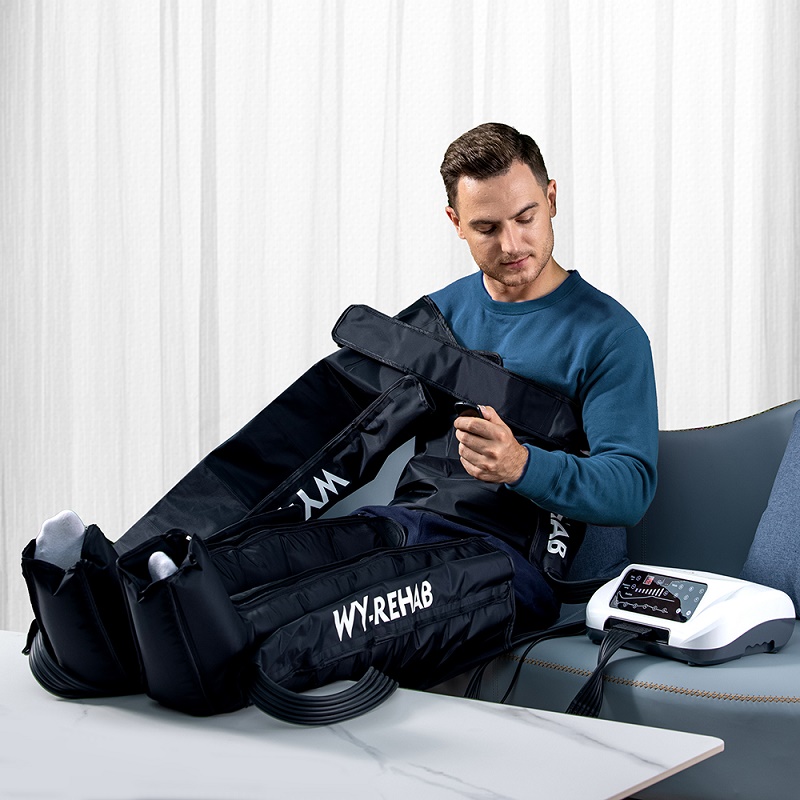
In recent years, pressotherapy has emerged as a popular wellness trend, with clinics and spas touting its benefits for detox, muscle recovery, and even weight management. While traditionally associated with lymphatic drainage and post-surgical care, growing evidence suggests that this compression-based therapy may offer unexpected advantages for individuals seeking to shed stubborn pounds. How Pressotherapy Supports Weight Loss Efforts. At its core, pressotherapy uses inflatable sleeves or compression boots to apply rhythmic pressure to targeted body areas, stimulating lymphatic flow and blood circulation. This process helps eliminate toxins, reduce inflammation, and alleviate fluid retention—all of which can contribute to a "bloated" appearance. By enhancing lymphatic drainage, pressotherapy machines like the pressotherapy lymphatic massage system assist in flushing out metabolic waste, potentially aiding in fat metabolism. Additionally, improved circulation delivers more oxygen to tissues, supporting cellular repair and energy efficiency during workouts. Expert Insights: Beyond Detox, a Metabolic Boost? Medical professionals emphasize that while pressotherapy isn’t a standalone weight-loss solution, it complements traditional methods like diet and exercise. "The therapy enhances venous return, which can reduce edema and make patients feel lighter," notes Dr. Emily Carter, a physiotherapist specializing in lymphatic health. "When paired with physical activity, pressotherapy for weight loss may accelerate results by minimizing muscle soreness and promoting faster recovery." This synergy is particularly appealing for those new to fitness or recovering from injuries, as it encourages consistency in active lifestyles. Choosing the Right Tool for Your Goals. For home users, investing in a professional pressotherapy machine tailored to individual needs is key. Advanced models offer adjustable pressure settings and targeted programs for legs, arms, or abdomen, ensuring personalized treatment. Many devices also integrate with wellness apps, allowing users to track progress and sync sessions with their broader health routines. When selecting a machine, prioritize FDA-approved or CE-certified options to ensure safety and efficacy. A Holistic Approach to Slimming. Ultimately, pressotherapy shines as part of a balanced weight management strategy. By pairing sessions with a nutrient-dense diet, regular exercise, and stress management, users may notice improved body composition and reduced cellulite over time. For those exploring non-invasive options to enhance their fitness journey, this technology offers a promising edge. As innovations in wellness continue, companies like Xiamen Weiyou Intelligent Technology Co., Ltd. are at the forefront of designing smart pressotherapy solutions that blend clinical rigor with user-friendly interfaces. Their cutting-edge devices empower individu...
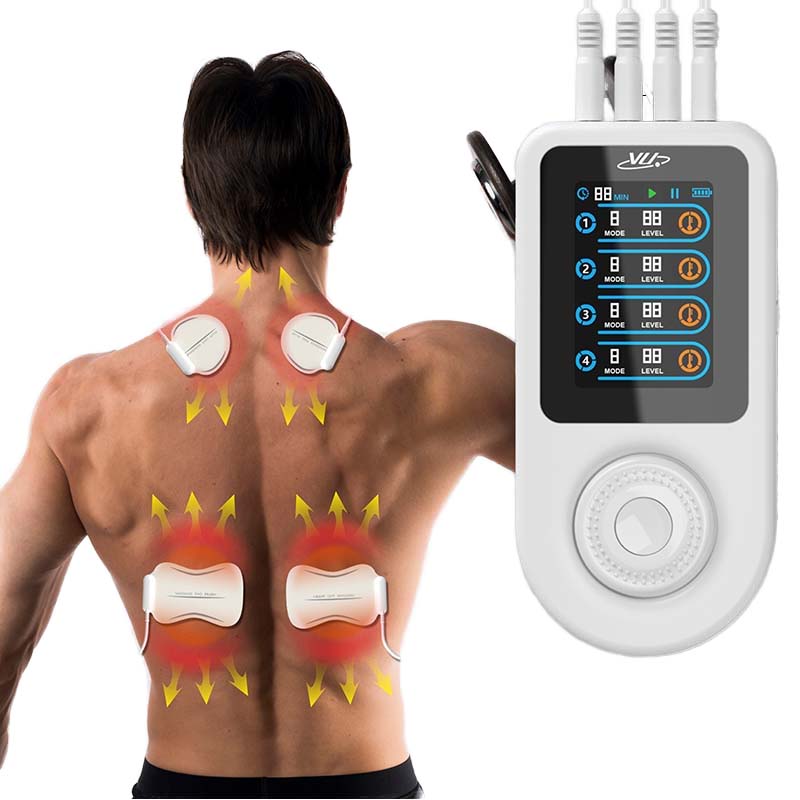
In the realm of modern pain management and muscle rehabilitation, two acronyms frequently surface: TENS and EMS. While both leverage electrical stimulation, their purposes, mechanisms, and applications diverge significantly. Understanding these distinctions is critical for consumers and healthcare providers seeking targeted solutions. TENS Units: Targeting Pain at the Nerve Level. A TENS unit (Transcutaneous Electrical Nerve Stimulation) is engineered to alleviate pain by disrupting nociceptive signals—the body’s way of communicating discomfort to the brain. Operating at low frequencies (typically 1-150 Hz), TENS devices deliver mild electrical impulses through electrodes placed near pain sources. This non-invasive therapy is FDA-cleared for conditions like chronic back pain, arthritis, and post-surgical recovery. Users often report reduced reliance on medication, making TENS a staple in body pain relief strategies. EMS Massager: Rebuilding Muscle Function. By contrast, EMS devices (Electrical Muscle Stimulation) focus on muscle re-education and strengthening. These units emit higher-frequency pulses (up to 150 Hz) that trigger involuntary muscle contractions, mimicking the body’s natural motor neuron signals. Originally used in physiotherapy clinics, EMS technology has evolved into portable physical therapy devices for athletes, seniors, and post-injury rehabilitation. Unlike TENS, EMS targets motor neurons directly, aiding muscle tone restoration and preventing atrophy. Applications and User Demographics. The choice between TENS and EMS often hinges on specific needs. TENS units appeal to those managing persistent pain, such as fibromyalgia patients or desk workers with chronic neck strain. EMS devices, however, cater to fitness enthusiasts seeking muscle recovery or individuals recovering from surgeries like ACL reconstruction. Some advanced systems now integrate both modalities, allowing users to toggle between pain management and muscle conditioning in a single device. Innovation in Hybrid Technology. One notable example of this convergence is the 4-Channel Physiotherapy Device by Xiamen Weiyou Technology Co., Ltd. This smart device seamlessly blends TENS and EMS functions, offering four independent channels for targeted treatment across multiple body areas. Its intuitive interface allows users to customize pulse width, frequency, and duration, while real-time biofeedback ensures optimal efficacy. Such hybrid models are redefining home physiotherapy, merging clinical precision with consumer accessibility. For consumers navigating the electrotherapy market, recognizing the unique strengths of TENS and EMS is key to selecting the right tool. Whether prioritizing pain relief or muscle rehabilitation, advancements like Xiamen Weiyou Factory integrated solution underscore the industry’s commitment to personalized, evidence-based care. As technology evolves, these devices will likely remain cornerstones of proactive health management.

While air compression devices like air compression massage systems and sequential compression sleeves are marketed as safe, non-invasive tools for enhancing circulation, pain relief, and recovery, their prolonged use isn’t without potential pitfalls. As a healthcare professional, it’s critical to understand the nuances between “non-invasive” and “risk-free” when advising patients or clients on long-term therapy. One key concern is overpressure injury. Many air compression leg massagers feature adjustable intensity settings, but improper calibration can lead to excessive pressure on limbs or joints. For instance, a 2022 case study in 《Physiotherapy Journal》 documented a patient who developed compartment syndrome-like symptoms after using a high-intensity compression device for three weeks. While rare, such cases highlight the need for personalized pressure settings based on individual physiology and medical history. Another often-overlooked risk is vascular compromise. Devices designed for lymphatic drainage or post-workout recovery may inadvertently restrict blood flow if used incorrectly. For example, applying compression sleeves over varicose veins or areas with peripheral artery disease could exacerbate existing conditions. Professionals should emphasize the importance of pre-use assessments to identify contraindications like deep vein thrombosis (DVT) or fragile skin, where compression therapy might be harmful. Long-term users of air compression therapy devices may also face skin sensitization or allergic reactions. While less common with medical-grade equipment, some consumer-grade models use synthetic fabrics or adhesives in sleeves that can irritate sensitive skin over time. Additionally, improper hygiene practices—such as reusing sleeves without cleaning—can lead to bacterial colonization, posing infection risks for immunocompromised individuals. To mitigate these risks, healthcare providers should advocate for evidence-based protocols: Device Selection: Recommend FDA-cleared or CE-marked devices with adjustable pressure gradients and safety timers. Customized Care Plans: Tailor compression cycles, intensity, and treatment duration to individual needs, avoiding “one-size-fits-all” approaches. Regular Monitoring: Schedule follow-ups to assess for skin changes, swelling patterns, or neurological symptoms like numbness or tingling. For healthcare providers seeking reliable, safety-certified air compression solutions backed by expert guidance, Xiamen Weiyou Intelligent Technology Co., Ltd. offers tailored device selection, clinical training, and ongoing technical support. Their team of engineers and medical advisors specializes in optimizing compression therapy for diverse patient populations. To explore customized strategies for your practice or learn more about their FDA-registered devices, contact Xiamen Weiyou Inte...
Categories
New Products
Home Use Air Compression Massage Mat for Body Pain Relief Read More
Multifunctional Electric Hospital Bed for Bedsore Prevention Read More
Air Compression Therapy Leg Foot Massager Manufacturer Read More
Wholesale DVT Prevent Device 6 Chamber Leg Compression Boots Read More
8 Chamber Rechargeable Lymphatic Drainage Legs Massage Machine Read More
Customized Air Compression Pants for Leg Lymphatic Drainage Read More
Whole Body Lymphatic Drainage Pneumatic Compression Massage Device Read More
Wholesale Hot and Cold Therapy Machine for Pain Relief Read More
Copyright © 2025 Xiamen Weiyou Intelligent Technology Co.,Ltd. All Rights Reserved. Power by

IPv6 network supported